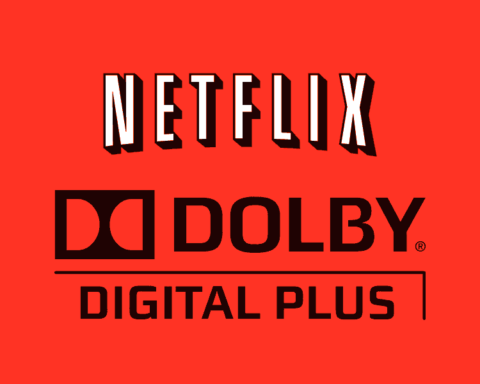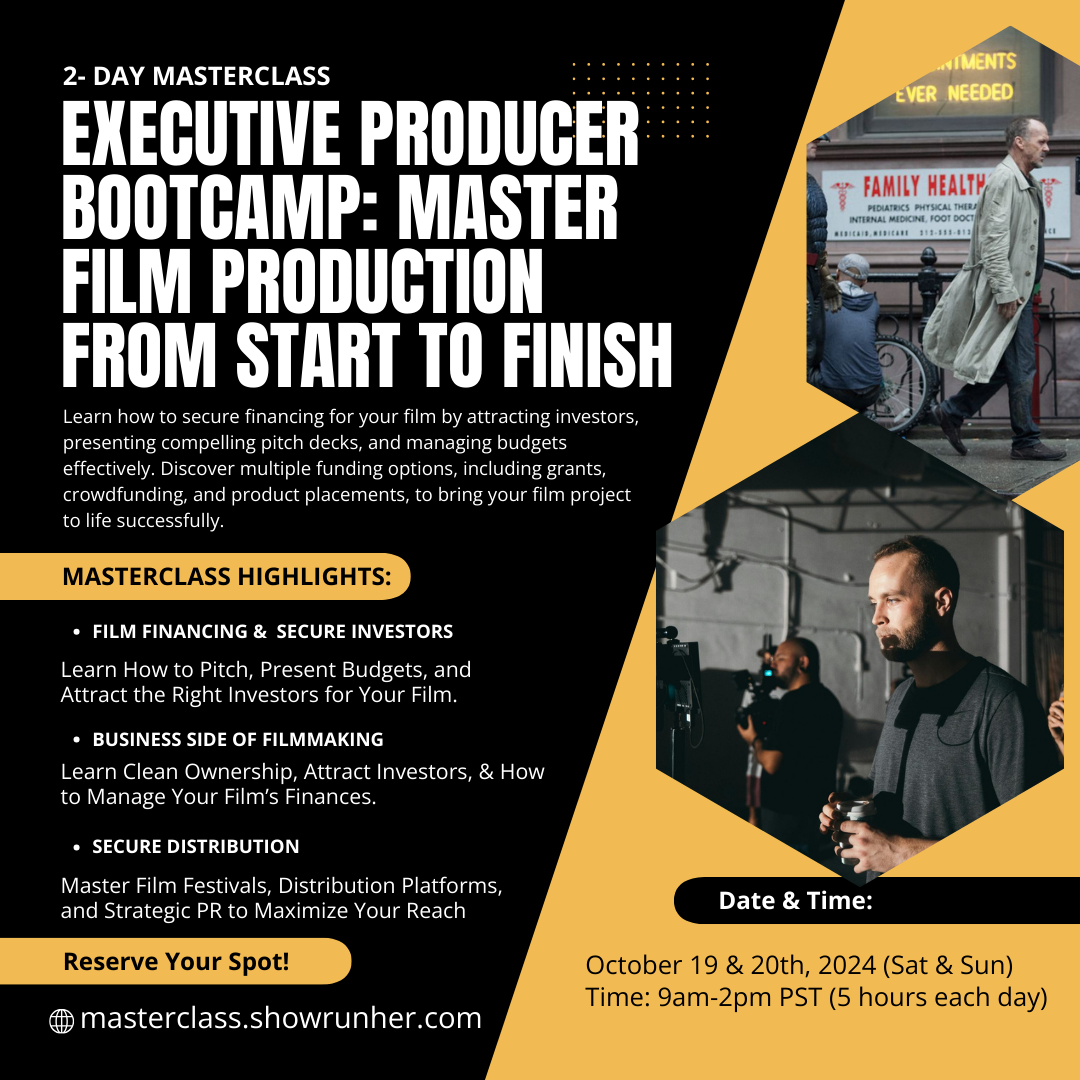Film production is a complex process that requires meticulous planning and careful allocation of resources. Whether you’re working on an indie short film or a major blockbuster, understanding how to effectively budget your project is crucial to its success. Budgeting isn’t just about allocating money it’s about ensuring that each dollar spent adds value to your project and helps bring your creative vision to life.
Because every penny tells a part of the story.
In this guide, we will take a deep dive into the key categories of a film budget, providing a comprehensive breakdown of where your money should go. We’ll cover everything from pre-production planning to post-production costs, talent expenses, and marketing strategies. By the end of this post, you’ll have a solid understanding of how to create a budget that supports your project’s goals while staying financially viable.

Pre-Production
Pre-production is the foundation of your film. It’s where ideas are solidified, plans are made, and the groundwork is laid for everything that follows. A well-organized pre-production phase can save significant time and money during production and post-production.
Script Development
- Cost Considerations: Script development can involve costs related to writing, revisions, and potentially purchasing rights to a story or book. If you’re hiring a screenwriter, this should be accounted for as well. This phase might also include costs for script consultants or workshops to refine the screenplay.
- Budget Allocation: Depending on the complexity of the script and the level of development required, you might allocate 2-5% of your total budget here.
Casting
- Cost Considerations: Casting directors, auditions, and talent agencies are crucial in finding the right actors for your film. Even if you’re casting non-union actors or newcomers, these costs can add up.
- Budget Allocation: Allocate 3-10% of your budget to casting, depending on the scale of your project and the caliber of actors you’re looking to hire.
Location Scouting And Permits
- Cost Considerations: Securing the right locations can be expensive, especially if you need to obtain permits or pay for location rentals. Location scouts, who can help find the perfect setting, should also be factored in.
- Budget Allocation: Depending on your locations’ availability and cost, allocate 2-5% of your budget for scouting and permits.
Production Design And Art Department
- Cost Considerations: The look and feel of your film are critical, and this is where your production design team comes in. They’re responsible for sets, props, and overall aesthetic, which all require careful budgeting.
- Budget Allocation: Set aside 5-15% of your budget for production design. This will vary based on the film’s visual demands, such as period pieces requiring more elaborate set designs.
Legal Fees
Budget Allocation: Allocate around 1-3% of your budget to legal fees, depending on the complexity of your agreements and the level of risk involved.
Cost Considerations: Contracts, legal consultations, and insurance are necessary to protect your project. This can include legal advice on rights, contracts with cast and crew, and liability insurance.
Production
The production phase is where your film comes to life. It’s also where the majority of your budget will be spent. This stage involves managing a large team, utilizing expensive equipment, and capturing the content that will ultimately be edited into your final product.
Crew Salaries
- Cost Considerations: The crew is the backbone of your production, and their salaries will likely make up a significant portion of your budget. This includes your director, cinematographer, sound team, lighting crew, and more.
- Budget Allocation: Allocate 30-50% of your total budget to crew salaries. This percentage can vary based on the size of your crew and the complexity of the shoot.
Equipment Rentals
- Cost Considerations: Renting equipment is usually more cost-effective than purchasing, especially for indie productions. This includes cameras, lighting, sound equipment, and grip gear.
- Budget Allocation: Plan to allocate 10-20% of your budget to equipment rentals. High-end productions might require a larger percentage if specialized equipment is needed.
Set Construction And Art Department
- Cost Considerations: If your film requires custom-built sets or extensive prop work, these costs can quickly escalate. The art department is also responsible for set dressing, ensuring that every scene looks authentic and visually appealing.
- Budget Allocation: Allocate 5-15% of your budget for set construction and art department needs. Period pieces or films with a specific aesthetic might require a larger allocation.
Wardrobe And Makeup
- Cost Considerations: Costumes and makeup are essential to bringing characters to life, especially in genre films or period pieces. This includes hiring costume designers and makeup artists.
- Budget Allocation: Allocate 3-7% of your budget to wardrobe and makeup, with the understanding that elaborate designs will require a larger portion of the budget.
Transportation And Travel
- Cost Considerations: Moving cast, crew, and equipment between locations can be expensive, especially if you’re shooting in multiple or remote locations. This also includes the cost of lodging for out-of-town shoots.
- Budget Allocation: Depending on the number of locations and the distance traveled, allocate 5-10% of your budget for transportation and travel.
Catering And Craft Services
- Cost Considerations: Keeping your cast and crew well-fed is crucial for maintaining morale and productivity on set. Catering costs should cover meals for all shoot days, while craft services provide snacks and beverages throughout the day.
- Budget Allocation: Allocate 3-5% of your budget to catering and craft services. This might increase slightly for longer shoots or larger crews.
Contingency Fund
- Cost Considerations: Unexpected costs are a part of every production, whether it’s a last-minute location change or unforeseen equipment repairs. A contingency fund is essential for covering these unexpected expenses.
- Budget Allocation: It’s standard practice to allocate 5-10% of your total budget to a contingency fund, ensuring that you’re prepared for any surprises that arise during production.
Talent
Talent costs can vary widely depending on the scale of your project and the level of actors you’re working with. This category includes all expenses related to hiring and compensating your cast.
Lead Talent Fees
- Cost Considerations: The lead actors often command the highest fees, particularly if they are well-known or have significant experience. Their presence can also drive interest in your film, making it a worthwhile investment.
- Budget Allocation: Allocate 10-20% of your budget to lead talent fees. For indie films, this might be lower if you’re working with emerging talent or non-union actors.
Supporting Cast Fees
- Cost Considerations: Supporting actors play a crucial role in your film, and their compensation should reflect their contribution. While these fees are generally lower than those of lead actors, they can still be substantial.
- Budget Allocation: Plan to allocate 5-10% of your budget to supporting cast fees, adjusting based on the number of roles and the experience of the actors.
Extras
- Cost Considerations: Extras are often needed for crowd scenes or to add depth to your film’s world. While their individual fees are low, the cumulative cost can add up, especially for large scenes.
- Budget Allocation: Allocate 1-3% of your budget for extras, ensuring that you have enough to cover all necessary scenes.
Stunt Performers
- Cost Considerations: If your film includes action scenes, hiring professional stunt performers is essential for both safety and realism. These professionals often command higher fees due to the risks involved.
- Budget Allocation: Depending on the complexity of the stunts, allocate 2-5% of your budget for stunt performers. High-action films will require a larger allocation.
Rehearsals
- Budget Allocation: Allocate 1-3% of your budget to cover rehearsal expenses, which can also help reduce production costs by ensuring smoother shoot days.
- Cost Considerations: Rehearsal time is crucial for ensuring that your cast is well-prepared, especially for complex scenes. Costs here include rehearsal space and any additional compensation for actors.

Post-Production
Post-production is where your film is shaped into its final form. This phase includes editing, sound design, visual effects, and more, each requiring careful budgeting to ensure a polished final product.
Editing
- Cost Considerations: Editing is a time-intensive process that requires skilled professionals. Costs include the editor’s fees, editing software, and potentially an editing suite if you’re not editing in-house. The editor is responsible for assembling the raw footage, pacing the narrative, and ensuring continuity across scenes, which is critical to the overall quality of the film.
- Budget Allocation: Allocate 10-15% of your budget to editing. This can vary depending on the length of the film and the complexity of the editing required. For example, a film with numerous cuts, transitions, and effects may require more extensive editing time and resources.
Visual Effects (VFX)
- Cost Considerations: VFX can range from simple compositing to complex CGI, with costs varying accordingly. High-quality VFX can elevate your film, but they come at a price. If your film involves fantastical elements, science fiction, or action sequences, VFX will be a significant part of your post-production budget. Costs also include software, VFX artists, and potentially motion capture or green screen work.
- Budget Allocation: Allocate 5-15% of your budget to VFX, adjusting based on the film’s reliance on visual effects. For films with minimal VFX, this percentage will be on the lower end, while sci-fi or fantasy films may require a larger portion of the budget.
Sound Design And Mixing
- Cost Considerations: Sound design is critical for immersing the audience in your film’s world. This category includes the creation of sound effects, dialogue editing, ADR (Automated Dialogue Replacement), Foley, and final mixing. High-quality sound design can significantly enhance the viewer’s experience, making it a vital part of post-production. In addition, sound mixing ensures that all audio elements—dialogue, music, and sound effects—are balanced and clear.
- Budget Allocation: Plan to allocate 5-10% of your budget to sound design and mixing. This can vary depending on the complexity of the soundscape needed for your film. Films with intricate soundscapes or heavy dialogue might require a larger allocation.
Color Grading
- Budget Allocation: Allocate 2-5% of your budget to color grading. Films with a strong visual style or that rely heavily on atmospheric visuals may require a higher allocation.
- Cost Considerations: Color grading helps set the tone and mood of your film by adjusting the color balance of each shot. This process requires specialized software and a skilled colorist to ensure the film’s visuals are consistent and visually appealing. Color grading can correct lighting inconsistencies, enhance the emotional impact of scenes, and give your film a professional, polished look.
Music Licensing And Composition
- Cost Considerations: Music plays a vital role in setting the emotional tone of a film. Costs here include hiring a composer for an original score, licensing existing tracks, and recording sessions with musicians. Original scores can be expensive, but they offer a unique and tailored sound for your film. Alternatively, licensing popular tracks can add instant recognition but may also come with higher costs.
- Budget Allocation: Allocate 3-8% of your budget for music, depending on whether you are using an original score or licensing popular music, which can be more expensive. Consider using royalty-free music or working with emerging composers to manage costs while still achieving a high-quality soundtrack.
Marketing & Distribution

Marketing and distribution are essential for getting your film in front of an audience. Even the most beautifully crafted film needs effective marketing to find its viewers. This phase involves a variety of activities, from festival submissions to online marketing campaigns and securing distribution deals.
Marketing Strategy Development
- Cost Considerations: A well-thought-out marketing strategy is essential for the success of your film. This includes the costs of hiring a marketing team or agency to develop and implement the strategy. A good marketing strategy will identify your target audience and the best channels to reach them, whether it’s through social media, traditional advertising, or word-of-mouth campaigns.
- Budget Allocation: Allocate 2-5% of your budget to developing a marketing strategy. This investment can pay off significantly in terms of audience reach and engagement.
Advertising
- Cost Considerations: Advertising costs can include online ads, print ads, billboards, trailers, and social media campaigns. The goal is to create buzz around your film and drive audiences to theaters or streaming platforms.
- Budget Allocation: Plan to allocate 5-10% of your budget to advertising, with a focus on the channels most likely to reach your target audience effectively.
Press And Public Relations
- Cost Considerations: Public relations efforts can help generate media coverage, which is invaluable for building interest in your film. This category includes press releases, interviews, press kits, and possibly hiring a PR agency to manage your film’s media presence.
- Budget Allocation: Allocate 2-4% of your budget to press and PR. This can vary depending on the scope of your campaign and the level of media attention you’re aiming to achieve.
Film Festival Submissions
- Cost Considerations: Film festivals are a critical platform for independent filmmakers to showcase their work and potentially secure distribution deals. Costs include submission fees, travel expenses for attending the festivals, and promotional materials like posters and press kits.
- Budget Allocation: Allocate 3-5% of your budget to festival submissions and related expenses. This can be higher if you plan to submit to multiple festivals or attend them in person.
Distribution Costs
- Cost Considerations: Distribution costs cover the process of getting your film into theaters, onto streaming platforms, or into physical formats like DVDs and Blu-rays. This might also include the costs of working with a distribution company or aggregator.
- Budget Allocation: Allocate 5-10% of your budget to distribution. The exact amount will depend on your distribution strategy and the platforms you plan to use.
Conclusion
Creating a film budget is a complex task that requires careful consideration of every aspect of the production process. By understanding the key categories of a film budget—pre-production, production, talent, post-production, and marketing & distribution—you can ensure that your resources are allocated in a way that maximizes the value of every dollar spent.
Each project is unique, and your budget should reflect the specific needs and goals of your film. Whether you’re working on a micro-budget indie project or a multi-million dollar blockbuster, the principles of careful planning, strategic allocation, and flexibility are crucial to your success.
Remember, the goal of budgeting isn’t just to keep costs under control; it’s to ensure that your film has the resources it needs to be the best it can be. With the right budget in place, you can focus on bringing your creative vision to life, knowing that every financial decision has been carefully considered and aligned with your overall objectives.
No matter the size of your budget, don’t let financial constraints hold you back. With careful planning and a dedicated team, you can create something truly special, regardless of the dollar amount behind it. Happy filmmaking!





